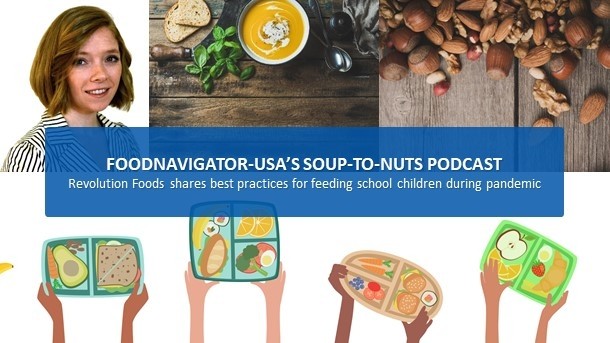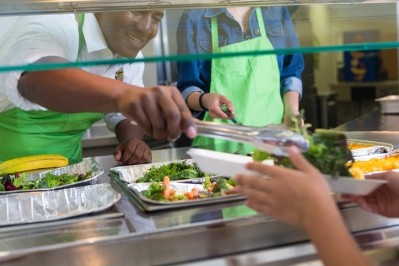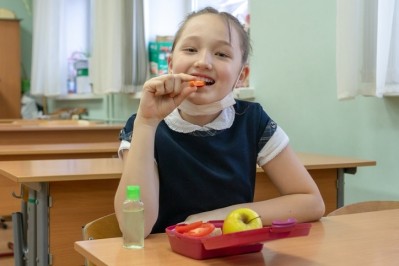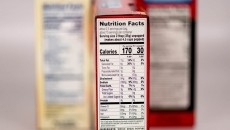Soup-To-Nuts Podcast: How can industry help feed students returning to school online & in person

Since the pandemic was declared and many schools transitioned to virtual learning, many districts have continued to provide free meals to students in need through the Summer Food Service Program and the Seamless Summer Option with help from a laundry list of waivers approved by the US Department of Agriculture to simplify paperwork and allow participants to pick up food rather than consume it at feeding cites.
Just as many of those waivers and programs were set to expire, USDA last week extended many necessary waivers for schools to continue providing free meals to qualifying students through the end of September and committed to “continually calculating remaining appropriate funds [through the Coronavirus Aid, Relief and Economic Security Act] to determine how far we may be able to provide waivers in the future.”
However, citing funding uncertainty, the department stopped short of legislators’ request to extend the Summer Food Service Program and Seamless Summer Operation nationwide, which would waive area eligibility to alleviate school administrative burdens and allow other community organizations to distribute meals, as they were able during the first months of the pandemic.
Against this backdrop, several non-profits, food manufacturers and food service providers have stepped in to help school districts feed students and their families safely during the pandemic. Among those is Revolution Foods, whose CEO Kristin Groos Richmond discusses in this episode of FoodNavigator-USA’s Soup-To-Nuts podcast how the pandemic has complicated and heightened the need for feeding students. She also shares best practices for feeding children this fall, whether classes are held online, in the classroom or a hybrid of both. And finally, she calls on food and beverages manufactures to help fill the gaps not directly addressed by the school meals program, such as feeding students on the weekends and ensuring their caregivers and siblings who are not in school also have enough to eat.
[Editor’s note: Never miss another episode of FoodNavigator-USA’s Soup-To-Nuts podcast – subscribe on iTunes.]
An evolving landscape
As an organization that provides approximately 3 million meals a week to students through schools, Revolution Foods is intimately familiar with both what children want to eat and what they need to eat – and Groos Richmond says her team strives to provide culturally relevant, healthy food with “dignity.”
In addition, with nearly 15 years of experience, Revolution Foods has fed children and families in all types of situations. So that when the pandemic hit, Groos Richmond said Revolution Foods was able to work closely with schools to adjust meal solutions to fit the needs of students and staff within the new constraints of social distancing and distance learning.
“About 22 million K-12 students in a normal environment – so normal [meaning] before March … receive a free, reduced-cost lunch meal through schools,” Groos Richmond said, adding that since the pandemic this number has increased.
“The latest statistics from Brookings Institute has said that two of five families with children under 12 are self-reporting food insecurity at this point. So, that’s just an astronomical number,” she said.
Groos Richmond also argues that providing well-balanced nutrition during the pandemic is essential to students’ academic performance, which could be at risk if they have inequitable access to distance learning resources.
“A multi-year study from a third-part research institutes correlates a healthy meal program with double digit improvements – to be exact 13.1% … in English language arts scores across three or four states. So, this is not just important for nutrition and nourishment of children from a health standpoint – it’s incredibly important from a driving academic outcomes and setting kids up to succeed,” she said.
Offering flexible options
With so much on the line, Groos Richmond said Revolution Foods “leaned in” to create flexible solutions for its meal programs and cultivate best-practices that schools can emulate as they prepare for the start of an academic year, whether that is online, in-person or a hybrid.
The first is offering flexible meals to best meet children’s and families’ needs. This might be individual meals, multi-day meal kits with directions for safely preparing fresh food, family-style options or pantry boxes, she said.
The style of meal also should reflect the safety needs of staff and distribution solutions, including whether the meals will be passed out at a school, dropped of at children’s homes or another option.
Based on her experience, Groos Richmond said that schools continuing with remote learning in the fall should consider these innovative best practices for streamlined distribution, including providing multi-day meal kits and flexible delivery or pick-up programs.
Schools offering in-person education likely will need to completely re-think how they serve meals given feeding children together in cafeterias is off the table with limitations and safety precautions around large group gatherings inside.
In these cases, they should carve out additional time for students to collect meals as they likely will need to go to the pick-up site in smaller groups and staff will need additional time for cleaning between groups as necessary.
Groos Richmond also suggests implementing mobile point-of-service systems or class rosters for accurate counting and claiming procedures if there are multiple meal pick-up sites at a school – such as in the cafeteria, outside classrooms in the hall or other spaces.
The third option – a hybrid of online and in-person learning – in many ways will be the most challenging for school nutrition professionals to navigate as they will need to create new in-person feeding strategies as well as determine meal pick-up procedures for days when students are off campus.
Groos Richmond recommends choosing between sending students home with meals for the next day at the end of a campus day or having parents pick them up. They also need to consider children’s home environment and whether they have access to a kitchen or if they are homeless and need options that can be consumed in non-traditional environments.
A call for help filling a funding gap
While schools are reimbursed for meals delivered to qualifying students, the rate is notoriously low – and already tight budgets likely will be tested even more during the pandemic as additional safety and sanitation processes will siphon off limited funds. This could compromise the variety or quality of food schools can offer – a problem that Groos Richmond said food and beverage manufacturers may be able to ease with in-kind or grant donations.
“There have been companies that have made significant donations on this front, which has been fantastic,” Groos said, noting that donations can be in the form of product that is near – but not past – its shelf date and in need of a high-turn solution.
Financial donations to non-profits that work with schools to feed students and their families are also helpful, she said.
She also noted that product and financial donations also help schools close the food insecurity gap for children on weekends and for their families by enabling them to provide additional food that kids can take home.
Wanted: shelf stable protein, clean ingredient options
Another way that Groos Richmond said the food industry can help ensure school children and their families are fed during the ongoing pandemic is to provide more shelf-stable protein options and products made with higher-quality, clean ingredients.
“From a supply chain standpoint, some of our earliest issues were around high quality sources of protein where we needed them for different formats,” Groos explained.
In addition, she said Revolution Foods is focused on providing clean label, high quality options, which can be difficult on a school lunch budget. She asks that industry think of creative ways to improve the quality of products provided to schools.
Groos Richmond also called on industry stakeholders to donate financially to local grant programs that help schools bridge the difference between what they are reimbursed by the government for school meals and the actual costs of higher quality ingredients.
And finally, she said, industry can help by providing marketing and outreach to parents and caregivers so that they understand where and when to pick up or expect food from schools and other community organizations.
Ultimately, Groos Richmond said, everyone has a roll in ensuring children and their families are well-fed and everyone will benefit.



















